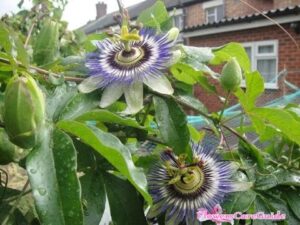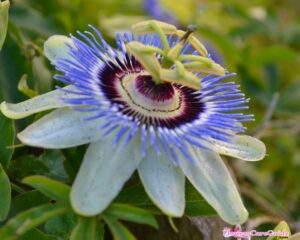Take cuttings and dry them, let them callous, lightly moist soil, sterile knife, or sharp pair of scissors. Six weeks after, the cuttings will take roots.
Elephant bush is succulent plants that usually thrive in dry and arid soil. The scientific name of this plant is Portulacaria Afra, and it belongs to the family of Didiereaceae.
If you want to jump on the trend to grow your own succulent but do not have the slightest idea as to how to care for them, we have got you covered. Unlike most house plants, succulents are relatively easier to grow. They are usually not as sensitive as most house plants.
So if you are a beginner when it comes to growing house plants, succulents are probably the best place to begin.
What are elephant bush?
These are African bushes that grow up to 6 to 20 feet in height in their natural habitat. They usually grow in the African sub-continent with a dry and warm climate. Elephants usually eat these plants, hence the name elephant bush. Other than elephants, elephant bushes make good fodder for goats and tortoise.
The Portulacaria afra or the elephant bushes are ideal for growing at home. They can adapt to almost any environment, they clear the air off of carbon dioxide and acts as a natural filter. These bushes are also edible and are rich in vitamin C. In African subcontinents, the elephant bushes are considered a delicacy and are often added in a stew, salad, and various other traditional dishes.
These African bushes look a lot like jaded plants or Crassula ovate. But unlike jaded plants, these bushes are usually drooping in nature and sometimes need support to grow. They can be placed trailing in a hanging basket or in a bonsai pot. They keep your homes clean, the air refreshed, and give your interiors a dreamy, cottage core aesthetic.
Elephant bush: Stems, Leaves and Flowers
Elephant bushes or Portulacaria afra, like most succulents, have thick, fleshy, reddish-brown stems. The leaves are small, glossy, and roundish in shape. Under proper care, they often grow small, tender flowers in clusters. The flowers are mostly in the shades of white, pink, and purple. In cultivation, sometimes the elephant bushes do not grow flowers.
How to grow elephant bushes at home?
As the saying goes, succulents thrive in neglect. While this may not be entirely appropriate for you, if you are planning to grow elephant bushes at home but the attention and care that it would need is very minimal.
When to plant the elephant bushes:
The best time to prepare the plantation of elephant bushes is the late winters. Prepare a dry and dilute fertilizer near the end of the winter or at the early springs. The strength of the fertilizer should be at the most 50 %. By the time, the plant takes roots; the weather will have grown warmer and more suitable for its growth.
Growing elephant bushes outdoor:
Even though elephant bushes thrive in dry and warm conditions, it is best to avoid direct sunlight. Direct sunlight would char the leaves and give your plant a shriveled up, dry look. If you are planting these bushes in the ground, dig up at least 3 inches of soil. The soil should not be moist at all. It has to be well-drained in order to sustain the bushes.
Once you plant the bushes in your garden, water them regularly. You must avoid overwatering them. In order to make sure that the plant requires watering, check whether the topsoil is dry or not. If it is not dry, do not water it any further.
The elephant bushes grow exceptionally well in garden space, along with other bushes or smaller plants. If you leave in an extremely cold climate region, perhaps it will be best to plant them in a pot. In that way, when the winter comes, you will be able to move the plant indoors as they these bushes do not do well in cold temperature.
Growing elephant bushes indoors:
If you are growing succulent indoor, place it in a place with indirect sunlight. Direct sunlight will char the leaves of the elephant bush and make them fall off. Regular watering should be enough for the plant’s growth. Make sure the pot you are using has draining holes so that the plant’s roots do not get waterlogged. You may also add perlite to the pot for drainage. Every two years, the pot for your Portulacaria bush should be changed.
The growth of these African bushes is very slow, so it will not immediately occupy the entire space you give it to. Trimming the spikes and the leaves occasionally will give your succulent a proper shape and size suitable for your home.
If you want your plant to grow to its full length, leave a two feet gap around its pot. Eventually, it will grow into the space given to it, but it will take a considerable time. In the meantime, you can cover the empty space with smaller plants and then remove them, once the elephant bush grows into its full size. This succulent thrives in bonsai pots or in hanging pots.
How to propagate Elephant Bushes or Portulacaria Afra?
Propagating elephant bushes is quite an easy and effortless task. You would simply need to cut a stem during late winters or springtime. You may simply just twist off a branch or use a sterilized blade for this purpose.
Then prepare a small pot and firmly press the cut-off stem into it. The soil in the pot should have slight moisture but mostly dry. You may use homemade compost or diluted fertilizer. You may add perlite to the soil. Use a temporary pot for the propagation of the elephant bushes. Once it starts growing, you may switch it to a bigger pot.
The propagation of elephant bushes is quite similar to jaded plants. If you have experience with jaded plants already, then this activity should be easy for you. Once you have placed the cut off stem into the freshly prepared pot of soil, most of the job is done. With exposure to warmth and sunlight, the stem will start developing roots within no time. Please, make sure that the plant does not receive direct sunlight. Slanted rays work best for its growth.
These are all the things that you need to know about elephant bushes if you are trying to grow one in your own home.
Some things to remember:
- Avoid direct sunlight – these African bushes should not face direct sunlight.
- Do not overwater the plant – always check for the dryness of the topsoil. Only water the plant, if the topsoil layer is dry. Also, make sure to have a drainage hole at the bottom of the pot.
- Elephant bushes can be placed in trailing hanging pots or in bonsai pots. They are drooping in nature and usually require a little support to grow.
- These succulents are edible in nature and are considered a delicacy in the African subcontinents. Their rich Vitamin C content makes them an excellent component for salads, soups, and other African traditional dishes.
- They keep the air in your home clean and refreshed by reducing the carbon dioxide content. They are also more resilient than the other houseplants.
So do not wait any longer, give into the succulent frenzy and grow your own elephant bushes at home!



